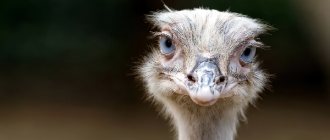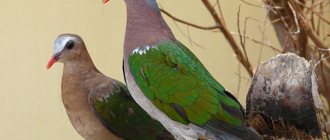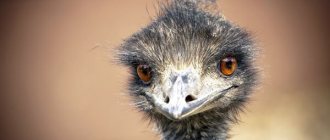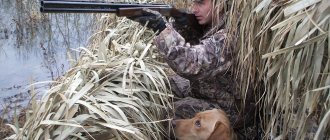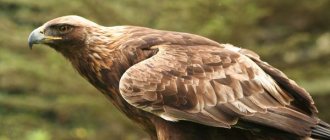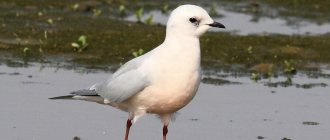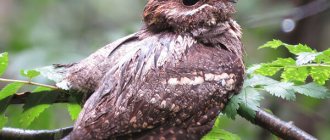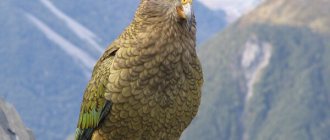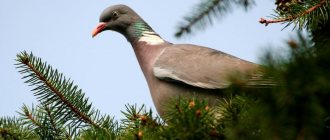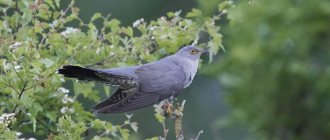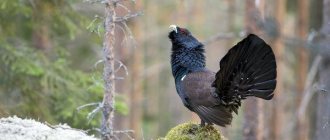- Wild animals
- >>
- Birds
Rheas are the largest flightless birds in South America, belonging to the order Rheaformes. Outwardly, they surprisingly resemble African ostriches and Australian emus, but are very distantly related to them. They have an original social system for raising chicks. Omnivorous, easily tamed and bred on farms.
Rhea family
The Latin name is Rheidae.
Rheas are a family of very large flightless birds with long legs and three toes. Color: gray or brown with white. The wings are used for display only, hidden under long soft feathers. The tail plumage is scanty, as is the head plumage. The species is common in South America.
| Order - Rhea-like | Family – Nandu | Rod - Nandu |
| Habitat : South America |
| Habitat : fields, meadows, plateaus, punas. |
| Height – up to 170 cm |
| Body weight – up to 50 kg |
| Reproduction method : laying eggs |
| Number of cubs – up to 55 |
| Life expectancy – up to 40 years |
| Protected status – Near vulnerable |
Story
The South American ostrich, according to archaeological excavations, was the first bird from its order to appear on Earth. For a long time, scientists could not understand to which zoological family the birds should be classified. There is still no consensus. Some believe that the rhea ostrich is the main representative of ostrich-like animals, others that it acquired ostrich-like features during the course of evolution, and still others classify it as a hidden-tailed species.
Flightless inhabitants of savannahs have been known to people since the 16th century. They were originally domesticated by the Indians, who used them for meat and feathers. In 1884, a description was given to the rhea order, and in 1849, the rhea family appeared, consisting of 2 species: the northern ostrich and the small one. Both are on the verge of extinction due to active hunting.
Evolution, classification, origin
Rheas belong to a group of large, flightless birds known as ratites. They are distinguished by the absence of a keel in the thoracic region and a characteristic palate. The origin of these birds has been established through recent discoveries and numerous fossils found in North America and Europe. While it was previously believed that ratites originated in the south of Gondwana.
New data shows that flying ratites inhabited the northern hemisphere in
size ratio - rhea and human
Paleocene period and Eocene epoch, 40-70 million years ago. The present southern distribution of these birds is a consequence of the migration of their flying ancestors. Fossil rheas were found in the Upper Pleistocene of Argentina. They lived about two million years ago, which means that the rhea is related to the tinamu.
From the history…
It is believed that ostriches appeared on the planet 12 million years ago. And the trade in the feathers of these animals dates back to the early Egyptian civilizations and goes back three thousand years. In some countries, even before the beginning of our era, animals were kept in captivity. In Ancient Egypt, noble ladies rode ostriches to festive ceremonies.
Animal feathers became in great demand at the beginning of the nineteenth century, which led to a significant reduction in the number of birds. In the middle of the century, a period of rapid development of ostrich farming began. The first farm in Africa appeared in 1838. Animals were bred solely for the purpose of obtaining valuable feathers. For example, in South Africa at that time, the export of feathers was in fourth place after the export of gold, wool and diamonds.
Gradually, ostriches began to be bred in captivity in other countries and on other continents: in the USA, Algeria, Egypt, Australia, Italy, Argentina, New Zealand. But during the period of two world wars, this type of business almost ceased to exist, and the number of farms decreased significantly.
physical characteristics
Rheas are smaller and less massive than ostriches: height is up to 1.7 m. Weighs up to 40 kg. The head, neck, rump and thighs are covered with feathers. The plumage is soft and loose. They have three front toes and no back toe.
rhea
The distal tarsal elements have horizontal plates in front. The alimentary canal and cecum are very long. Urine is stored in the cloaca and is eliminated in liquid form. The copulatory (copulatory) organ is extrudable.
The common or large rhea (Rhea americana) is 1.7 m tall. Height at the withers is 100 cm. Wingspan is 2.5 m. Paw length is 30-37 cm. Beak is up to 12 cm. Males are larger than females. The tarsus has about 22 horizontal plates at the front.
common rhea photo
Darwin's rhea , also known as the small rhea, also known as the long-billed rhea (Rhea pennata) is smaller than the common rhea, reaching 90 cm in height. The tarsus reaches 30 cm and consists of 18 horizontal plates.
Darwin's rhea
Taxonomy [ edit | edit code]
Fossil evidence suggests that rheas undoubtedly existed in the Eocene, while more ambiguous findings suggest that they arose as early as the Paleocene. Thus, rheas are one of the oldest families of birds in general. The more difficult it is to determine their evolutionary systematics. External resemblance hints at a relationship with the African ostrich, but there are zoologists who consider the rhea to be a basic group within the order Ostrichidae, whose parallel group is the collective taxon of all other ostrichidae. Another relatively new hypothesis generally separates the rhea from the order of ostriches and sees in them a relationship with the crypted tails. According to this theory, the resemblance of rheas to ostriches arose as a result of convergent evolution.
Rheas living today are divided into two types:
- Darwin's rhea or little rhea (Rhea pennata)
- common or northern rhea (Rhea americana)
Habitat
Rheas are grassland birds; greater rheas and one subspecies of Darwin's rhea (Pterocnemia pennata pennata) prefer lowland grasslands or pampas (steppes of South America). The other two subspecies of the small rhea live on the plateau in the Andes (punes), in deserts, salt pans, and steppes. However, during the non-mating season, pp pennata feeds in lowland meadows. This subspecies usually breeds at higher elevations where grass grows in tufts, at an altitude of about 2000 meters.
habitat
Diseases
The most dangerous disease of Nandu is considered to be bird flu, which can be identified by a set of symptoms:
- elevated temperature;
- refusal of food;
- secretion of mucus from the respiratory organs;
- intermittent breathing;
- green tint of urine.
This disease cannot be treated. In this case, infected birds are disposed of in order to save healthy birds.
The only preventative measure is vaccination.
- Parasites
- Infectious
- Other
Worms
Roundworms (helminths) that cause various diseases
Read
Aspergillosis
An infectious disease of chickens that affects the respiratory organs and leads to the death of the bird
Read
Necrotic enteritis
An acute disease that disrupts the microflora of the gastrointestinal tract
Read
Newcastle disease
What is it and how to avoid infection? Main characteristics of the disease
Read
Salmonellosis
Symptoms of acute and permanent forms of the disease, treatment and prevention
Read
Smallpox
Causes, symptoms of various forms, preventive measures and treatment methods
Read
Bird flu
Symptoms, diagnosis, prevention
Read
Pterophagy
What is the reason, why does it require urgent intervention and how to prevent the disease?
Read
Rhea behavior, features
Rhea voice
Rheas are quiet birds, except as chicks when they make a plaintive cry, and during mating season when the males make a low, deep sound, sometimes described as the last note of a siren or a two-syllable grunt.
One way or another, one of the sounds of these birds, similar to “rhea,” became the reason for the corresponding name of the family.
Male mating displays
Males put on an elaborate display where they produce their vocalizations by raising the front of their body, stretching their neck up and forward, and ruffling their feathers vigorously. At the same time, the wings rise and spread to the sides. After the sound signal, the bird can run a short distance, sometimes flapping its wings up and down alternately.
mating games
Usually such a performance is staged near females, it may be accompanied by the demonstration of a wing indicating a specific female. The male flaps his wings below his head and walks in this position next to or opposite the female, holding the position for 10 minutes or more.
Females are attracted to this display. As the display moves into a more intense phase, the male begins to swing his neck from side to side in a figure eight pattern, often attracting females minutes before they go to feed. If the female does not leave, but remains, then the pair begins to mate.
Herd lifestyle
Until the mating season has arrived, the common rhea lives in flocks of 10-100 individuals. The small rhea prefers to live in smaller groups than the large rhea. Like ostriches, rheas living in small groups are more vigilant and careful. They are also more wary in tall grass than on the plains. Rhea eats most of the day. Males show some aggression towards each other from time to time.
herd of rhea
How to escape from predators
escape from predators
Fleeing, the rhea zigzags, flapping its wing, which serves as a kind of rudder that helps make sharp and unpredictable turns.
Dust bathing is common among captive birds. The groups break up in the winter when mating season begins.
Description
Ostriches are a loose concept, because there are at least two species that can be used as farm pets, and they are not even close in a biological sense. The most promising one today is the African ostrich, which was domesticated only about 150 years ago, so it is not surprising that it has not yet become incredibly popular. This species is a ratite flightless bird belonging to the Ostrich family of the ostrich order and is its only representative.
An alternative species of domestic ostrich is the Australian emu. Despite the certain similarity of these creatures, since the 80s of the last century they belong to different branches of the biological classification - the Australian version is today usually classified as belonging to the Emu family of the cassowary order. There are also South American rhea ostriches, but their breeding is either not practiced at all or is at the very beginning stage.
Due to its unusual appearance and popular legends that such a bird hides its head in the sand in case of danger, any schoolchild can recognize an ostrich. The ostrich looks generally the same as any other bird - it walks, relying on two lower two-fingered (in emu - three-fingered) limbs, while the upper limbs are pressed to the body. In the case of these two species, the structure of the wings and the muscles adjacent to them does not allow ostriches to fly, especially taking into account the total mass of their body.
If we talk about colors, the male African ostrich is usually black as a whole, but there are white inserts on the body, in the area of the wings and tail. The African female looks even less elegant, she is usually of a nondescript grayish-brown hue, and the inserts, which are pure white in the male, have a certain dirty tone. As for the emus, regardless of the sex of the individual, they look approximately the same, being covered with feathers very similar to straw, while the bluish neck remains bare. Their sex is almost impossible to distinguish visually, so farmers determine it by the way the bird screams.
The main method of movement for such a bird is running - thanks to its strong legs, it is able to reach speeds that inspire respect; in particular, emus accelerate to 50 km/h. The lower limbs can also be used for other purposes - for example, there are cases where Australian ostriches could use them to damage metal wire fences. In addition, an adult emu is able to effectively defend itself with the help of its legs, with which it inflicts strong blows on the enemy.
The indigenous inhabitants of the regions where ostriches of one kind or another live have hunted them since ancient times. Considering the pleasant taste of meat and eggs, as well as the impressive size to which this bird grows, it is not surprising that they decided to domesticate it. “African” is rightly considered the largest among all modern birds, it grows up to 270 cm in height, that is, significantly taller than a person, and weighs a good 1.5 centners. Against its background, even the emu, which occupies an honorable second place among all birds, may seem like a baby with a height of about one and a half meters and a weight of no more than 55 kg.
How food is obtained, nutrition and diet
Both rhea species are herbivores. Sometimes they eat small animals - lizards, beetles and grasshoppers, but in small quantities. Much of the common rhea's range is used by humans as pasture for cattle, so the area is planted with forage grasses and other crops. The common rhea eats a lot of alfalfa and corn.
rhea
The Lesser Rhea lives in less developed areas but is mostly herbivorous, eating grasses such as saltwort and cactus fruit.
Is an ostrich a bird or an animal that eats everything?
An adult male gathers around him many chosen ones for mating. After this they are deleted. But one of the females, occupying a leading position, lingers next to the male until the end of nesting. In ostriches living in humid areas, breeding lasts from June to October.
Individuals living in desert areas can breed all year round. The fern, with the similar name common ostrich, reproduces in the spring, in conditions of moisture and comfortable temperature, with the help of spores and leaves (waiami). It grows very quickly and in just 3 years it can occupy a large area.
The nest is a flat depression that the male digs out with his paws and beak. Each female lays up to 12 eggs in it. Up to 60 eggs can accumulate in the nest, which have a diameter of 13 cm and a length of 16 cm. Males can hatch offspring independently or alternately with females. The incubation period takes from 45 to 52 days. The shell is so strong that it can withstand the weight of an adult. It takes the chick several hours to make a hole for itself.
We invite you to familiarize yourself with Ficus triangularis (triangular): how to care, photos
Emus can have different plumage depending on where they live. The animal's feathers have a very special structure that prevents them from overheating. This allows birds to lead an active life even in very hot periods. Emus generally tolerate temperature differences from –5 to 45 degrees very well.
Emus are distributed throughout almost all of Australia, as well as on the island of Tasmania. The exceptions are dense forests, arid regions and large cities.
Animals feed on plant foods, such as the fruits of bushes and trees, plant leaves, grass, and roots. They usually feed in the morning. They often enter fields and eat grain crops. Emus can also eat insects. But animals drink quite rarely (once a day). If there is a large amount of water nearby, then they can drink several times a day.
https://www.youtube.com/watch?v=2TBRsbsCsKo
Emus often become victims of animals and birds: foxes, dingoes, hawks and eagles. Foxes steal eggs, and birds of prey try to kill.
During the mating season, females acquire a more beautiful shade of feathers. They are quite aggressive and often fight among themselves. They can fight intensely for a lone male.
In the Australian wild, birds are protected by law, but this is just a formality. In reality, many populations have long been on the verge of extinction. The emu is the symbol and pride of the Australian continent.
Reproduction
Much of the information is based on observations of the greater rhea in the wild and in captivity. This is a polygamous bird. Both males and females can have two or more mating partners. In winter, rhea flocks are divided into three types: single individuals, groups of 2 to 15 birds, and large groups. Males soon begin mating displays and compete with each other; this behavior becomes more intense during the spring-summer breeding season.
adult with offspring
Males try to attract harems of females, for this they build nests and take them there. When the harem chooses a male, one female approaches the nest.
The female lays the egg on the edge of the nest, and the male rolls it under himself. Thus, about 15 females lay eggs for one male. As a result, he produces a clutch of 50 or more eggs in a week. Then he begins to incubate them.
At first, the male behaves aggressively and covers the eggs with his wings. Gradually he relaxes. Sitting on the clutch, the male alternates movements of his head forward and upward, shaking his neck.
Like ostriches, some eggs are left outside the nest - this is done on purpose to separate the clutch, as a result, the likelihood of predators attacking the nest is reduced, because they will first attack the eggs that lie outside.
eat grass
Recent research has shown that some males engage in same-sex partnerships. The subordinate male creates a clutch, and the dominant one attracts females, incubates the eggs and takes care of the chicks. The dominant male then attracts the next harem to another nest and the operation is repeated. Research has shown that dominant and subordinate males are equally successful at incubating and raising chicks.
egg laying
The average clutch size of the great rhea in Argentina is 24.9 eggs. The incubation period lasts 36-37 days. The male, who incubates the clutch alone, leaves from time to time to feed. Like many other birds, rhea chicks begin to communicate with each other from their eggs; they hatch almost simultaneously. The male does not stay at the nest longer than 36 hours from the moment the first chicks begin to emerge.
On average, 20% of the chicks survive. But in some years the percentage increases. Males abandon nests with bad eggs, which burst. Also, many chicks become victims of predators. Hunting birds pursue groups of rheas, and when a young individual strays from the herd, they eat it.
Much less is known about the reproductive behavior of the lesser rhea. However, it is clear that it has much in common with the greater rhea in this aspect: similar mating games, clutch size and incubation period.
Scientific facts about ostriches
- The African ostrich not only holds the record for growth. This breed itself is considered the largest among all. The bird's homeland is the central regions of Africa. Newborn chicks weigh on average 1.5 kg. Due to rapid growth, after 12 weeks the weight of ostrich chicks will be 18-25 kg. Adults can reach a weight of 60-80 kg. African ostrich
- The species is one of the few birds that lack a keel in their body structure. Its absence does not allow ostriches of both sexes to fly even short distances. But their wings are well developed and serve as balance while running. If the bird spreads its wing, its span will be 1.8-2 m.
- Ostriches also know how to dance and attract a partner with this behavior. In dance, special importance is attached to the legs and wings. Despite their large growth and bulkiness, the birds move smoothly and with concentration.
- The bird's main weapon is its legs.
The lower limbs are distinguished by their power and muscular structure; at the end of the foot there are only two toes. Their distinctive feature is their hoof-like structure. This illusion is created by a huge and sharp claw that grows on the thumb. The hoof serves as additional support during running, and also strengthens the kick several times. A blow from an ostrich's limb is fatal to humans and causes great harm to the animal that attacks the ostrich. - The main diet of the ostrich is plant foods.
But the bird is capable of feeding on small reptiles and small animals. The favorite grass of birds is tough; they love young bushes and soft branches. Since ostriches of any kind do not have teeth, they require additional help in grinding food. To do this, the bird swallows small stones. Some individuals can swallow up to 1.5 kg of pebbles. Features of feeding ostriches - Birds of this species differ from their relatives in the structure of the digestive tract.
As soon as food enters the oral cavity, it immediately moves to a section called the proventriculus. There the food is moistened and moved further. In the stomach, food is crushed by stones and dissolved with the help of gastric juice. The main process of digestion of coarse foods occurs in the intestines. Ostrich eggs are the largest among birds - Ostriches can reach high speeds thanks to their strong legs and wings. After special studies conducted in Africa, it was possible to prove that in the presence of danger, individuals are capable of reaching speeds of up to 80 km/h. The average speed of a moving herd when danger appears is at least 75 km/h.
- Ostriches are distinguished by their long life; there are cases when ostriches lived for more than 75 years, this is one of the longest indicators in the animal and bird world.
- It is interesting that birds also have organized sleep. They are able to sleep standing or sitting, with their neck always in a vertical position. Birds rarely close their eyes during sleep. Therefore, to determine the condition of the ostrich, you need to listen to its breathing. In sleep, it is calm, uniform, and there are practically no movements of any kind.
- Under no circumstances should you approach the bird during the mating season.
A person is perceived as a threat and a direct rival, so the bird will make every attempt and effort to drive you away from itself. Ostriches can reach speeds of up to 80 km per hour - Ostriches are freedom-loving individuals. If you decide to start breeding them, you should take care of having a large and clean range. At the same time, if possible, it is better to separate the young animals with the female from the main herd in order to avoid accidental trampling of the babies.
- When breeding individuals in farm yards, they should be well fed with vegetables and roughage to ensure a sufficient vitamin and mineral balance for the birds. On natural pastures of the wild environment, the bird replenishes it on its own.
Meaning for humans
bolas for hunting rhea
Rhea feathers have always been used to make dust collector brushes. The leather is dried and made into raincoats, and used for fashionable clothing in the tanned state. Rhea meat has long been a staple food for South Americans. With the advent of rifles, rhea hunting became more efficient than using bolas (a weapon made from three leather straps tied together in the center, with stones at the ends). The bolas was untwisted and skillfully and accurately thrown at the running bird. The straps wrapped around the rhea's legs and dropped him to the ground, effectively immobilizing him. At the same time, the bird remained alive, its skin was not damaged. Bolas are still used in some places.
Feeding
Birds are unpretentious in nutrition. At home they like boiled potatoes, beets, carrots and apples. Grains and corn crops and greens are additionally introduced into the diet.
In winter, due to the lack of fresh greens, mixed feed is introduced, optimally intended for feeding broiler chickens due to the lack of specialized feed for the order of rheas..
Feeding in captivity is organized using hanging feeders. They should hold up to four kilograms of feed.
The principle of feeding chicks differs from feeding adults . For the first three days, newborns are not fed at all: they have enough of the remaining nutrients from the yolk sac. On the fourth day, a mixture of crushed clover leaves and mixed feed is given. It is recommended to introduce boiled eggs and cottage cheese. From the fortieth day until the age of three months, the chicks are fed with compound feed, placing separate feeders with gravel and small stones.
Ground shell rock or limestone should always be freely available : they contribute to the formation of a strong skeleton, and this is especially important given the intensity of growth of chicks.
Common rhea
Lat. Rhea americana
common rhea
Other names
Greater rhea, northern rhea, South American ostrich.
| Order - Rhea-like | Family – Nandu | Rod - Nandu |
| Habitat : South America |
| Habitat : grassy meadows, pampas |
| Height – up to 170 cm |
| Body weight – up to 50 kg |
| Reproduction method : laying eggs |
| Number of cubs – up to 26 |
| Life expectancy – up to 40 years |
| Conservation status – Nearly vulnerable species |
Taxonomy
The Latin name for the common rhea is Rhea americana. Described in 1758. Five subspecies – R. a. Americana, R.a. Intermedia, R.a. Nobilis, R. a. Araneipes, R. a. Albescens. The subspecies have minor differences, mainly in color.
physical characteristics
big rhea and man
Height – 140 cm. Weight – 40 kg. Body color is gray or gray-brown above, white below, without gender differences. The neck and head of the male are black or mostly black. The female is paler. Unlike the small rhea, the entire length of the pre-wax is bare and covered with transverse scutes. Sometimes there are albinos - white feathers and blue eyes.
Speed
When running, the rhea reaches speeds of up to 60 km/h.
Habitat and distribution of the great rhea
Great rhea range
Brazil, Uruguay, Paraguay and Bolivia. Grassy meadows, pampas.
Behavior
The distribution density of rheas is 0.05 birds per 1 hectare. During periods when birds do not breed, they live in herds of 20-50 individuals. When mating season begins, males create nests and place them in close proximity to groups of females to attract them to mate.
Nutrition
Herbivore, feeds on grass and legumes. Eats leaves, roots, fruits of trees and other plants. Eats thorny plants without danger or damage to health. Like many other birds, it eats small stones along with food, which help digest food by grinding vegetation inside the stomach.
Farmers often breed rheas on plantations that are not part of their diet. In this case, the birds eat pests in the fields - locusts, beetles, etc. Rheas also hunt scorpions, most likely they have a strong immunity to their poison. They also eat mice, lizards, and small birds. During periods of drought, they may eat dead fish.
Reproduction
Males incubate the eggs, which are laid by a harem of females, in a nest on the ground. The average number of eggs in a clutch is 26. About 7 females lay them for one nest. Females are attracted to courtship dances of males with display of wings. The male leads the female to the nest and often sits on it while she lays eggs on or near the edge of the nest. The male then rolls the eggs into the clutch and carefully arranges them. The color of the eggs is greenish-yellow. The diameter of the eggs is from 9 to 13 cm, weight – 0.6 kg. The incubation period lasts from 29 to 43 days. The male incubates the eggs. The chicks grow to the size of an adult animal at three months of age.
Natural enemies of the common rhea
Adult birds suffer from the claws of pumas and jaguars. Young animals are hunted by wild dogs. The carancha or common caracara eats newborn chicks. Nests are often plundered by armadillos; they build an underground tunnel to the base of the nest and steal eggs from underground with impunity.
Security status
Populations suffer from agricultural development.
Great rhea and man
People hunt this bird for its meat, skin and feathers. Currently, birds are bred on farms.
Content
Rheas, unlike other types of ostriches, are smaller in size, and this affects the rules for keeping them - they are almost no different from the rules for keeping chickens, except for the dimensions of premises and walking areas. Accommodation of single individuals - at least 5 square meters. m per head, families of 3-4 birds - 30 sq. m. The height of the shed should be 3 m, and the partitions in it should be at least 1.3 m.
The poultry house must be warm; even in winter, the temperature is maintained at least +18˚С. In addition, an effective ventilation system is necessary. In its absence or insufficient power, carbon dioxide and ammonia vapor will accumulate in the room, which threatens the development of bronchitis and rhinitis in pets. In addition to artificial ventilation, the barn where the Nandas live is ventilated naturally at least once a day. The procedure should last 10 minutes.
Sawdust is used as bedding, which is spread in an even thick layer. Change the litter once a week. In winter, a sand bath must be installed in the barn. Its volume should be enough for the birds to fit comfortably and take a bath.
In summer, individuals of this species are kept in pens in the fresh air. In one of the corners of the pen a double wall with a roof is installed, where the birds can hide from precipitation or the scorching sun. Feeders, drinking bowls, and a bathhouse are installed directly on the ground. Feed is poured so that the containers are filled to 2/3 of the volume. The water is changed twice a day, the sand in the bathroom is changed once a week.
Nutrition
We can safely say that Nandus are omnivores. They do not neglect anything - grain crops, fresh grass and in the form of hay, insects, fruits, vegetables, small vertebrates. Often the need for water is covered by succulent feed.
The following are used as a source of minerals, vitamins and amino acids:
- egg shells;
- chalk;
- shell rock;
- ready-made premixes for ostriches.
Bird proteins are obtained from ordinary baker's yeast, cake, bone meal, and meal. In winter, grass or alfalfa hay, chopped vegetables and root crops, soybeans, and silage must be added to grain feeds. In addition, fine gravel or pebbles are needed to activate and optimize the functioning of the digestive system.
Darwin's rhea
Lat. Pterocnemia pennata
Darwin's rhea (small)
Other names
Lesser rhea, long-billed rhea, South American ostrich, Darwin's rhea.
| Order - Rhea-like | Family – Nandu | Rod - Nandu |
| Habitat : South America |
| Habitat – grass meadows, Andean forests |
| Height – up to 100 cm |
| Body weight – up to 25 kg |
| Reproduction method : laying eggs |
| Number of cubs – up to 55 |
| Life expectancy – up to 40 years |
| Conservation status – Nearly vulnerable species |
Taxonomy
Described in 1834. Three subspecies - Rhea pennata pennata (Darwin's rhea), Rhea pennata tarapacensis (Puna rhea), Rhea pennata garleppi (mountain rhea).
What it looks like, physical characteristics
Height – up to 1 meter. Weight – up to 25 kg. The plumage is brown and white. The upper part of the tarsus is partially covered with feathers, but the posterior and lower parts are bare and covered with transverse scutes.
Distribution and habitat
range of the small rhea
Argentina, Chile, Peru, Bolivia. Grassy meadows, Andean punas.
Behavior
They live in flocks of 2-30 individuals. The distribution density is 0.11 birds per kilometer. Males protect nests during the breeding season, attract groups of females to the nest, females lay eggs, and males incubate them alone.
Nutrition
They feed on fruits and grass leaves. The diet depends on the habitat and season. In some places the diet predominates on herbs, in others on leaves of shrubs or fruits.
Reproduction and reproductive behavior
Males collect and incubate eggs in the nest, which are laid by a group of females. The masonry is located on the ground. The yellow-green eggs measure 12.6 by 8.7 cm and incubation lasts from 30 to 44 days. The number of eggs in a clutch is from 5 to 55 depending on the region. Sexual maturity occurs in the third year of life.
Security status
Two isolated populations are suffering serious damage from hunting.
Darwin's rhea and man
People hunt this species for its meat and skin.
Ostrich farm products
All over the world, ostriches are bred for dietary meat, eggs, skin, fat, and feathers. Many farmers sell ostrich chicks.
Ostrich meat
While the indigenous people of South America have long eaten rhea meat, dishes and products made from ostrich meat began to appear in Europe only at the end of the 20th century. The impetus for the development of this market was the outbreak of mad cow disease in 1996, when the question of an alternative to beef arose.
Lean ostrich meat is red in color, similar to beef, but superior in the following:
- It contains more protein than beef and turkey meat;
- Has a high content of Omega3 and Omega6 fatty acids;
- Low content of fat (1.59 g), cholesterol (57 mg) and calories (105) per 100 g of product;
- Useful for people suffering from heart and vascular diseases.
Ostrich leather
It is as popular as crocodile or snake. Products made from it are usually exclusive and expensive. The highest quality leather is obtained from birds that have reached the age of 10-14 months. They are used to make very expensive shoes and haberdashery goods - gloves and bags.
Properties for which it is highly valued:
- Doesn't get wet.
- Thin, but not inferior in strength to elephant one.
- Due to the large amount of natural oils it contains, it is very elastic. 4. Ideally takes any shape, has a beautiful texture
- Easy to paint.
Rhea eggs
One rhea egg replaces 12 chicken eggs in terms of calories. Eggs weigh on average 660 g. They are considered a dietary product. The optimal shelf life is 3-4 days, the maximum is 7-8. They differ in color:
- bright yellow - “golden” in the great gray rhea;
- pale green in Darwin's rhea.
Females begin to lay eggs from the age of 2, starting in the spring and every other day throughout the summer. The shells of the eggs are very strong and at the same time thin, reminiscent of porcelain and are used in folk crafts for making dishes and vases and painting. Easy to cut. When exposed to the sun for a long time, it can change its golden color to white. To preserve the color, the product is coated with UV-resistant varnish.
Feather
The wings of rheas are larger than those of African ones. But the feathers are not as lush as those of African species, and there are none at all on the tail. Due to their dark color, feathers are difficult to paint. The colors are usually olive in color.
Feathers are collected during molting or cut off. In addition to decorations, fish bait and cat toys, they are used to make brooms that do not shake off dust, but absorb dust. Such whisks are used to clean monitors, glass surfaces and car appliances.
Breeding
The first ostrich breeding farms appeared in Latin America at the beginning of the 19th century. Birds were originally bred for feathers and skin.
In the 80s of the last century, scientists came to the conclusion that ostrich meat contains 1.5 times less cholesterol and 9 times less fat than beef. Since that time, the number of farms created for breeding ostriches began to increase. Many farmers, especially in Latin America, choose rheas because of their unpretentiousness and fertility. Over a period, just one pair can produce up to 50 eggs, costing several hundred dollars.
About
